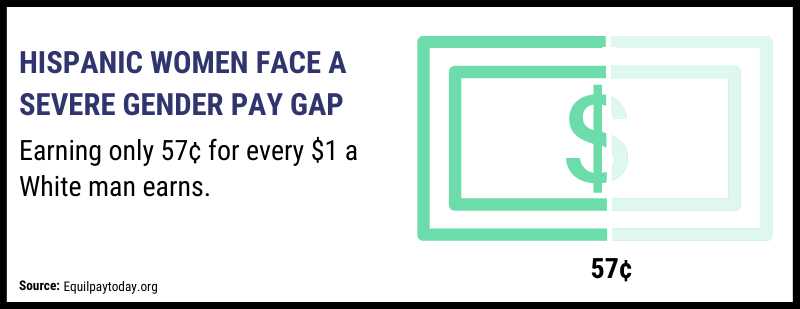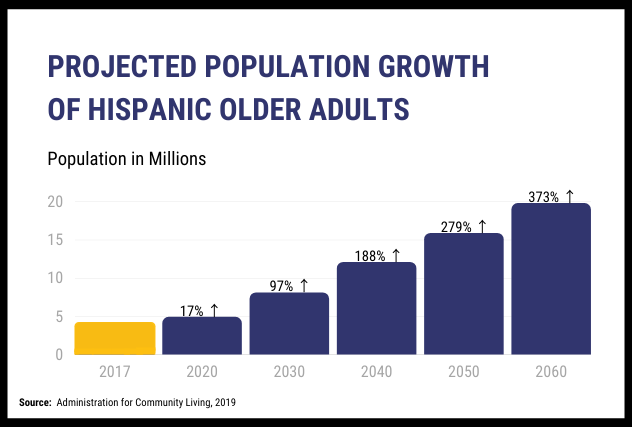Hispanic Aging Population:
The case for Policy Considerations

Introduction:
According to the U.S. Census Bureau, minorities will soon make up a quarter of the 65 + segment of the U.S. population. The Hispanic population will make up the largest portion of this segment, totaling 22% by 2060. This community is comprised of low-income, working class individuals who have poorer health care outcomes. With a diversifying older adult population, we will require additional services and supports to ensure a promising golden age.
Here, I will tell the story of the inequities in aging the Hispanic population shares.

Hispanics Make up 62.1 Million People of the U.S. Population.

Lower Median Income:
My father tells me that one of life's guarantees is the turning of time and with this time, I've come to notice that it is not experienced in the same way by everyone. There are racial inequities that have created longstanding disparities. One of which is household income. New census data shows that things haven't improved.

Women Earn Less on the Dollar:

If we were to look at income across gender, we see that women get paid less than men for equal work. The gender pay gap is even more harrowing when stratified by race. This makes the extra 25 cents from the national statistic look like a good deal.

Opportunity Costs in Unpaid Labor:
The combination of lower overall income and stronger gender pay gap magnifies the opportunity cost the Hispanic community takes on in providing care for their aging loved ones. This population tends to provide more hours of care than other groups. This translates to unpaid hours of labor. This population experiences a spill-over effect of unmet needs in helping their loved ones age, where they are happiest, at home.


Financial Security in Older Age:
This population faces many barriers in retiring comfortably, culminating in being high-risk for being unable to financially keep-up with their lifestyle in older age. Retirement wealth is seemingly unobtainable and it shows.

Plot Twist: Immigration Status
One’s immigration status determines their eligibility for federally funded programs like Medicaid, Medicare and Social Security. These are programs that older adults heavily rely to level their access into a more sound older age. Those who are most vulnerable are the individuals who are not served by these entitlement programs. It is not hard to imagine this sparking a generational cycle of financial insecurity caused by racial inequities and exacerbated by an aging loved one’s immigration status.

Rising Hispanic Older Adult Population

The Hispanic population growth will soon begin to transform the older adult segment of the population. This is a community that would have navigated through systems of oppression and consequentially would have made it to an older age with higher needs. It is essential that we consider this community’s unique circumstances and in anticipation, proactively create equitable policy change.

Get Involved Today!
Let's tackle the most challenging burden Hispanic older adults face today by advocating for immigration reform. Visit UnitedWeDream.org to donate and to sign up for their newsletter!

